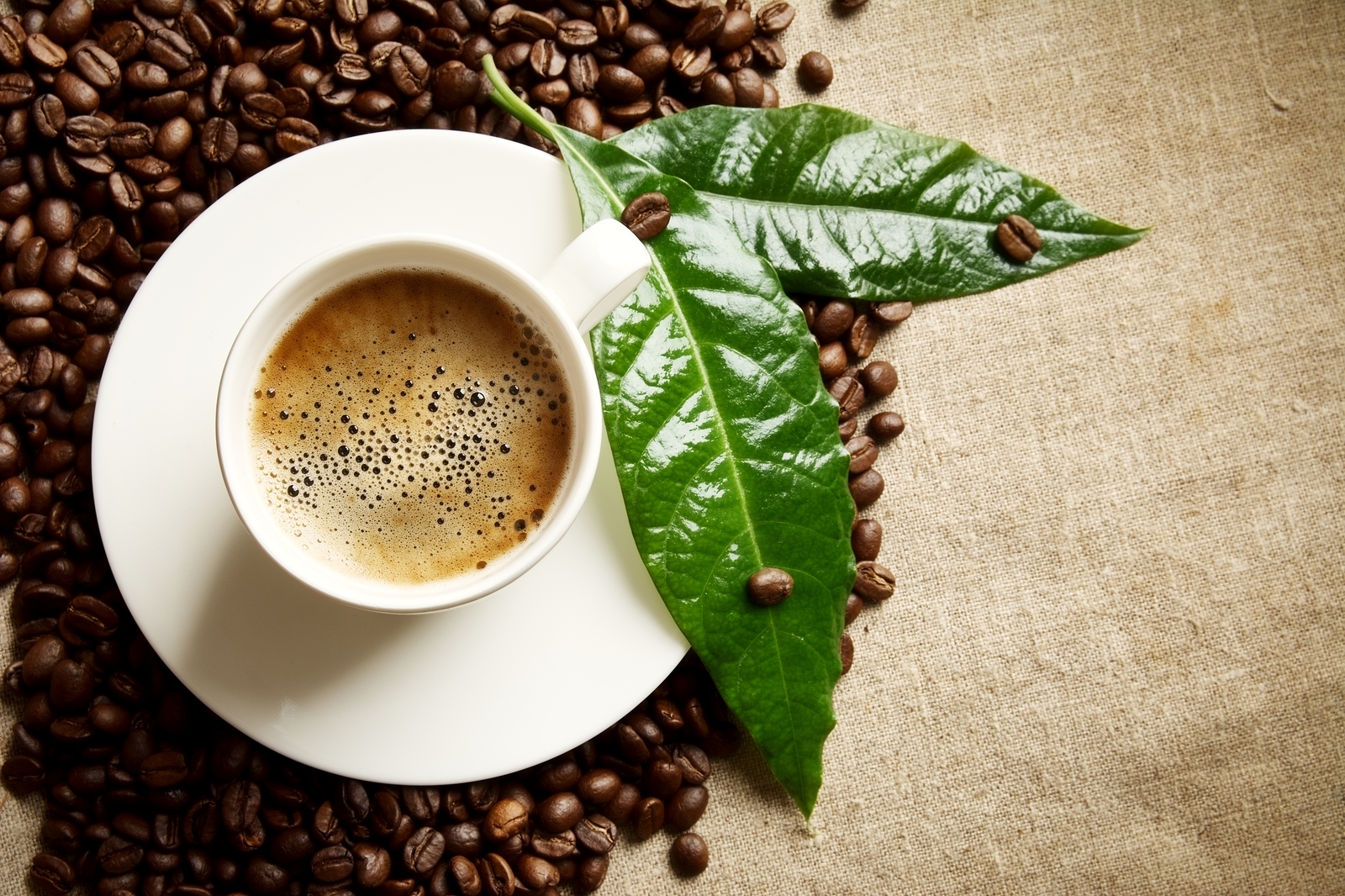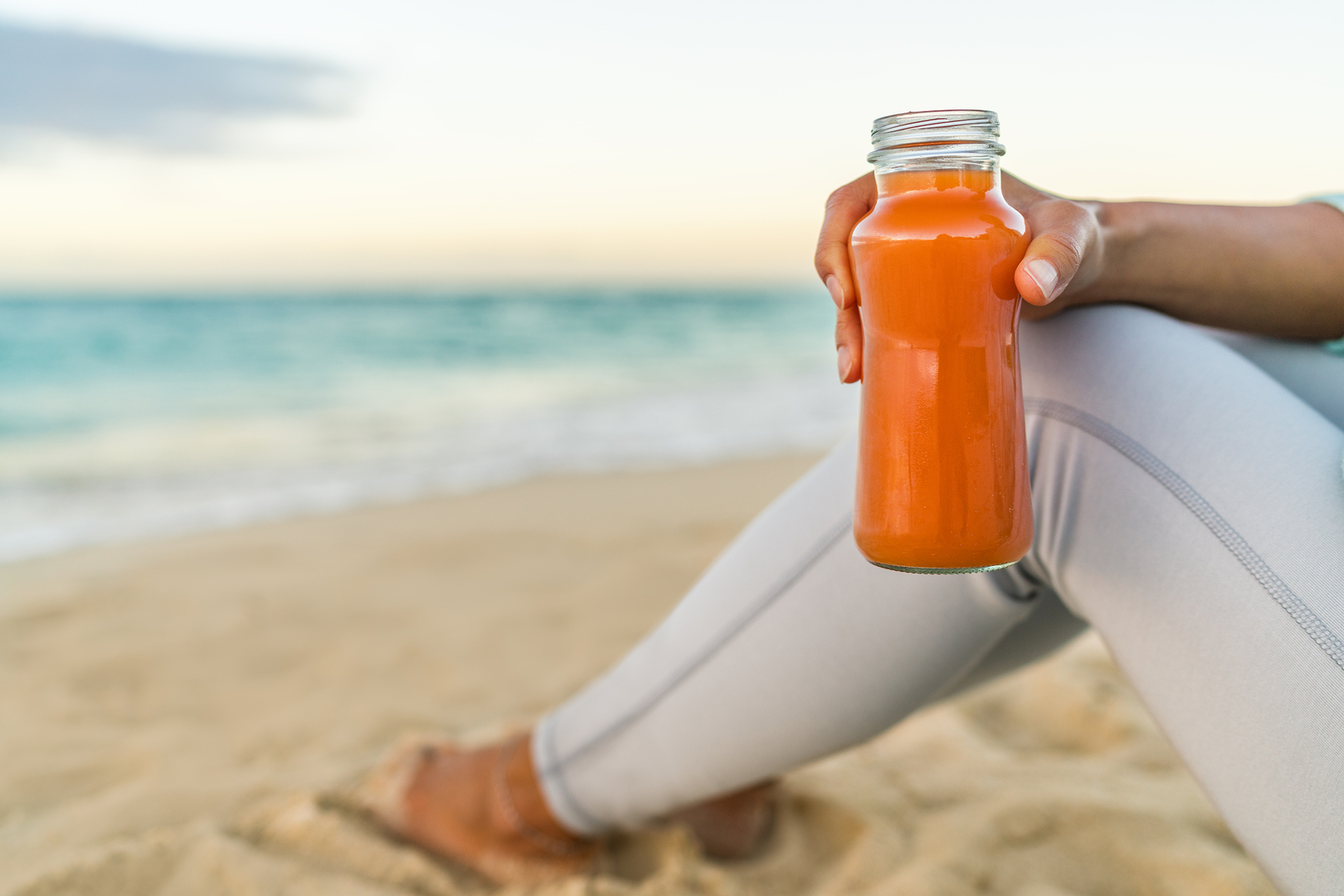How long has it been since you felt truly great? Stop for a moment and take inventory of how you feel right now. Are you feeling tired, bloated, moody, flabby, achy or spaced-out? Do your clothes fit a little tighter than you might like? Are you suffering from allergies or chemical sensitivities? Or are you so used to feeling “off” that it now feels normal? If so, let me tell you how you can feel better in just two weeks by simply paying more attention to what you eat.
I can’t think of a patient who hasn’t been skeptical when I tell them how life-changing the Quick-Cleanse can be – but it’s true. You are what you eat. It’s that simple. Of course, diet is not the only factor — getting to the root of health issues is complicated. But it is a fundamental piece of the puzzle. With this elimination diet plan, you’ll eliminate the dietary “clutter” that is taxing your digestive and immune systems and slowing your metabolism. From there, you can quickly determine which foods fuel your unique biochemistry and which ones get in your way. The reward will be increased energy and focus, clearer skin, more efficient digestion, and an improved muscle-to-fat ratio — you may even lose a few pounds.
This is the same eating plan I recommend to my patients. The cleansing plan is simple and can be customized to suit your comfort level. Changing eating habits can be discouraging, difficult and confusing — which is why most conventional doctors don’t go there. They don’t believe women can do it! But I know differently because I’ve seen the solid evidence every day in my office. So take it slowly — and don’t give up! Try this plan for two weeks and see how you feel. If you fall off, try again a few months later. I promise you that the self-knowledge and vibrant health you gain will be worth it.
So let’s get started!
How a Quick Detox Diet Works
A Quick-Cleanse plan helps turn down the noise in your body and frees up your immune system to deal with other, potentially more hazardous concerns — like viruses, accelerated aging, or unchecked cell division. Because you will be eating whole foods, simply prepared, and supplementing with a probiotic and fiber supplement, the plan allows your upper GI tract to cleanse, rest and restore itself – which in turn boosts your liver’s ability to detox efficiently, quiets inflammation, heals the lower gut, revs up the metabolic fire, cleanses the colon, and reminds your body to burn fat, not sugar, for fuel.
No diet is a cure-all. In fact, I don’t like the word diet because it brings to mind fads and self-deprivation, and in my experience most diets of that nature just don’t work. Because the science of weight loss is so much more complex and variable with the individual than we ever previously thought, it wouldn’t surprise me if traditional dieting became a thing of the past. While the specifics of an effective elimination diet are complex in that they depend upon an individual’s unique make-up, the basic idea is simple: certain foods and nutrients will fire up your metabolism and certain foods and substances will derail it.
Because everyone’s biochemistry is different, multiple factors come into play in a successful cleansing plan, including your age, genetic profile, the degree of inflammation in your body, hormonal balance including thyroid levels, hydration, exercise, rest, and above all, your liver’s ability to detoxify. But it’s safe to say that stress, environmental exposure, poor exercise habits, and suboptimal nutrition begin to take their toll on women universally by the time they reach their late 30’s to early 40’s. An improved diet and nutritional supplementation can undo much of the damage wrought by our modern lifestyle. But to really flush your system out you will need to identify which foods are optimal for your individual “blueprint” — and which are best avoided. And that’s what the Quick-Cleanse diet is all about.
The Quick-Cleanse Plan
My Quick-Cleanse plan is adapted from the nutritional and lifestyle guidelines that form a mainstay of my plan. The cleansing plan and guidelines work hand-in-glove with each other because you cannot sustain hormonal balance without a nutritionally rounded diet, while at the same time it’s tough to choose healthy foods when your body is experiencing erratic hormonal fluctuation (ask any woman with undeniable PMS cravings). There is a powerful action/reaction equation at work here. Stubborn weight gain, PMS, fatigue, GI issues, joint and muscle aches, increased food sensitivities and mood irregularities are just a handful of the many diet-related symptoms that can worsen and diversify with hormonal imbalance. So regardless of where you may fall on the severity scale (if you aren’t sure, take my Homonal Imbalance Quiz), my Quick-Cleanse plan can help your hormonal symptoms, and may put an end to your discomfort altogether.
Don’t be surprised if you feel fatigued in the early days as your body works to eliminate toxins. At the end of two weeks, you should be feeling more alive in your own skin, energized, and focused, and experience less pain and improved digestion. You will also be more in-tune with the requirements and rhythms of your own body.
Quick-Cleanse Guidelines
The basic idea of the Quick-Cleanse plan is to progressively remove certain foods and food categories from your diet for two weeks, then phase them back in and monitor how you feel. This plan is challenging, but it is not calorie-restricted. You may eat as much as you want of the recommended foods. The goal at the end of two weeks is to bring your biochemistry closer to baseline. As you reintroduce certain foods, you will have an undiluted reaction and be better able to judge their overall effect on you.
While on the Quick-Cleanse plan, I recommend you eat three balanced meals and two snacks, one at mid-morning and the other mid-afternoon, every day. To simplify life while you’re on the plan, shop ahead to the degree you are able using the Quick-Cleanse shopping guide, and clear a special place in your refrigerator and kitchen shelves for your foods. Here are more guidelines in greater detail :
- Eat at least 3-4 oz of lean protein with every meal and 1-2 oz with each snack (3-4 oz is about the size of a deck of cards).
- Try to keep overall carbohydrate intake to 60 grams per day, with about 15 grams per meal and 7 grams per snack, unless you are working out regularly (more than 4 days a week).
- Use oils with a high smoke point for cooking. Grape seed oil is my favorite, but there are many other good choices. Extra-virgin olive oil and flaxseed oil are good choices for dressings. Store all oils in a cool, dark location.
- Do not skip meals. Your body burns fuel during the day when you are busy and stressed, so that’s the best time to give it the nutrients it needs.
- Do not eat after 7:00 pm. This will allow your digestive system to rest while you sleep.
- Drink eight to ten 8-oz glasses (at least 2 quarts) of pure, filtered water each day.
- Take a rich multivitamin with calcium and magnesium. I also recommend essential fatty acids and 500 mg of vitamin C. Eat or drink something nutritious when taking your nutrients to help absorption, and be sure to drink at least one big glass of water with them. This approach will help prevent the stomach upset some women experience with nutritional supplements.
- Take a fiber supplement each morning and evening. I recommend buying fresh flax seeds and a small coffee grinder in which to grind them. Sprinkle ground flax seeds on breakfast porridge or salads — they are a great source of fiber and alpha-linolenic acids.
- You will also need to take a good probiotic twice a day, 30 minutes before eating or according to directions.
- Do some form of gentle exercise each day. I suggest 30–45 minutes of walking (15 minutes after each meal, if you like). If you already work out, don’t stop now. Continue your regular routine, or tone it down a little if you feel fatigued. If you find you are hungry, eat a banana (or any of the other recommended foods) before or after your work-out.
- Try to go to bed by 10:00 pm. This is not imperative, but it will help your body detox by reestablishing a natural circadian rhythm, which will in turn smooth out your hormonal cycles. After two weeks you’ll notice that you sleep better at night and have more energy through the day, when you need it.
Foods to Exclude
Following is list detailing three levels of foods to exclude, ranging from less strict to very strict. I encourage you to customize what you eliminate according to your own emotional and physical comfort level.
Depending on your preferences, you can approach an elimination diet from one of two ways: either beginning at Level III and becoming less strict over two weeks, or vice versa, beginning at the Level I and eliminating more foods as you progress. Trust your intuition on this, and don’t be afraid to experiment a little. The important thing is not to give up if you don’t get overnight results.
In general terms, we have found that the stricter you are, the more quickly you will see results — but you may also feel worse before you feel better, and this approach isn’t right for every body. Some of the symptoms that can arise in the first week as your body rids itself of stored-up toxins and fat include headaches, increased fatigue, depressed mood, nausea, lightheadedness, joint or muscle stiffness, and changes in GI function. This is normal, so do your best to stick with it. If you don’t make it the full 14 days the first time, don’t beat yourself up; just resolve to go a little longer the next time. Good health is an evolving process!
If you prefer to take a moderate approach, you can start at the first level and see how you feel. If you do not experience a change, or as you are energized to go further, proceed to the next level. Eliminate the foods on each successive list, again checking in with how you feel at each stage along the way. Alternatively, you can start your cleansing plan by eliminating all of the foods listed at once. (Do be cautious about discontinuing caffeine cold-turkey. For hints on how to wean yourself, see our article here). If you begin with level III and work backwards, once again gauge the rate at which you add foods back in according to how you feel.
Level I — Eliminate the Following:
- Alcohol
- Packaged and processed foods (good rule of thumb: if it has more than three ingredients on the label, don’t buy it!)
- Caffeine
- Chocolate and cocoa
- Condiments: ketchup, relish, chutney, barbecue sauce, teriyaki and soy sauce
- Fats: shortening, margarine, processed oils
- Grains: wheat, spelt, barley, kamut, rye, triticale, corn
- Juices that are not fresh or raw
- Peanuts
- Processed meats: canned meats, cold cuts, bacon, sausage
- Pork
- Salt, in excess
- Shellfish
- Soy and soybean products: tofu, tempeh, soy sauce, etc.
- Soft drinks
- Sweeteners: refined sugar/white sugar (sucrose), brown sugar, raw sugar, evaporated cane juice, fructose, high-fructose corn syrup, honey, maple syrup, barley malt
Level II — All of the Above, Plus:
- Beef and veal
- Dairy, including butter
- Mayonnaise and mayonnaise-like spreads
- Nightshade vegetables: tomatoes, eggplant, peppers
- Nuts and seeds
- Salad dressings
Level III — All of the Above, Plus…
- Citrus fruits (except lemon, if it agrees with you)
- Egg yolks
- High glycemic-index fruits: bananas, dates, figs, grapes, pineapple, raisins, watermelon
- Vinegars
- Mustards
Foods to Enjoy
For a complete list of the many foods you may enjoy on the Quick-Cleanse plan, see the shopping guide. I recommend that all women and their families, but especially anyone on an elimination diet, buy organic and locally-grown food whenever possible, and always wash produce thoroughly. Do not eat fruit (or anything else) with mold on it.
The best lean proteins are boneless, skinless chicken, turkey breast, and egg whites (preferably free-range, organic, and antibiotic-free). Certain fish are okay, such as: smaller ocean species like sardines and mackerel; white fish such as flounder or cod; or farm-raised tilapia or rainbow trout (again, organically farmed, if possible). Grass-fed organic beef is acceptable in limited amounts (no more than 12 oz per week). I also recommend buying brown rice protein powder to blend into filling smoothies.
Beans and legumes are a great choice to add bulk and lean protein, whether you are vegetarian or not. You may also eat steamed brown rice, quinoa, amaranth, teff, wild rice and millet (again, see the shopping list for a complete guide). These grains are whole, complex carbohydrates that can provide a steady supply of energy throughout the day — especially when combined with legumes or other protein complements. But again, we see every woman as a unique individual, and just as some find that animal protein does not agree with them, other women cannot tolerate a diet high in vegetable protein sources.
Vegetables are fairly limitless in possibilities. Green leafy vegetables are particularly known for their cleansing, alkalizing properties and have been prized for centuries for flushing toxins, including Traditional Chinese Medicine and Ayurvedic medicine.
Seasoning is another way to add infinite variety and antioxidants to the foods you choose for your detox diet. Buy fresh spices whenever you can, or grow your own! See the shopping list for the full complement of spices you can include.
Snacking is heartily encouraged on the elimination diet — but you may have to rethink your idea of what makes a good snack! Half a steamed chicken breast with snap-peas? Almond butter and rice cakes? Or half an acorn squash stuffed with quinoa, lima beans and scallions, anyone? You may need to add an extra snack, especially if you work out, or if you are just simply famished. Listen to your body. There is no rule that says you can have only two snacks per day.
This may seem like a trivial thing, but we have also found that something as simple as varying the texture and color of your foods can play a huge role in how satisfied you feel. For an example of what one day on the Quick-Cleanse diet might look like for you, click here.
Hints for Success
The Quick-Cleanse plan is not without its challenges, and many a woman has burst into tears in my office at the very thought of changing her diet so radically — even for two weeks! If you are having similar feelings or emotions flare up once you’re following the plan, don’t worry. It’s okay — food is an emotional thing. Do your best and don’t get down on yourself. If you manage to cut out even two potential offenders in two weeks, you’ve done yourself some good! Next time you may succeed in cutting out a couple more.
To assist you with the process, I’ve come up with a few hints and watch-out-for’s. I have found these tips to be tried and true after years of working with women from all walks of life. See how they work for you:
- Schedule wisely. Look ahead in your calendar and choose two weeks that are relatively stress-free. Holidays, family gatherings, and major deadlines are in direct opposition to your efforts.
- Pre-shop. Shop ahead for all of your detox/elimination diet foods and supplements. I’ve provided a quick-and-easy comprehensive shopping list for you to print out and take to the store. Establish a special shelf in the fridge, cupboards, or countertop for your cleansing program foods.
- Limit entertaining, going out to eat, and going to parties. It can be hard to stay focused on your Quick-Cleanse plan during social gatherings, so try to keep them to a minimum for just two weeks.
- Be honest. Tell your friends and family about what you are trying to do. Ask them for their active support — you may be surprised how inspiring you can be!
- Journaling. Use a food diary, scheduling a time each evening to write and chart your progress, including any difficulties and symptoms. This will help you notice improvements.
- Enlist a friend. Have a friend join you in the cleansing program and pre-arrange special treats to enjoy together — a daily walk, yoga class, or weekend shopping expedition.
- Reward yourself. Think of your absolute favorite (non-food!) things. Enjoy at least one every day. Take a long hot bubble bath. Get a massage or a manicure and pedicure. Borrow or buy yourself a new CD or take a leisurely bike ride. Allow yourself time each day in the natural world. Think of this short time as “me” time and revel in it. Don’t feel guilty; your neurochemical reward response can help you hardwire positive behavior!
- Get adequate rest. This is especially important when your system is ridding itself of toxins. If you can, luxuriate in the occasional nap. This can be very cleansing and restorative!
- Breathe!
Phasing Food Back In
Once you hit the two-week mark, pat yourself on the back and give yourself a hearty congratulations. Hopefully you will be feeling significantly better. If you want to continue the plan, go ahead! If you have had enough, it’s time to reintroduce foods into your diet.
Depending on what you’ve given up, reverse the process, eating a lot of a particular food category (like dairy) for two days and see how you feel. Try to introduce the foods you crave the most last. I know this sounds counterintuitive, but sometimes our minds and bodies get addicted to abnormal states (see our food sensitivities article) and undermine our efforts to implement healthy changes.
Most common food sensitivities (wheat, dairy, corn, soy, yeast, sugar) become blatantly obvious after two weeks on the Quick Cleanse. You may find you suffer from a vicious “food hangover” upon reintroducing certain foods that never seemed to bother you before. Take this as a sign of your success! You now have some valuable information with which to go forward. Keep track of any changes in your food journal and remember your food triggers — that way you can choose wisely during times of stress.
Moving Toward Wellness
The Quick-Cleanse plan is not intended to solve chronic health or weight issues. It is meant to be a first step in acquiring new understanding of your unique physiology. It should allow you to see your body’s ability to detox as a limited resource, one that you can foster with a bit of extra attention and self-care. Once you know what kinds of food make you feel well and which make you feel sick, you put yourself in the driver’s seat of your own long-term health and weight loss.







